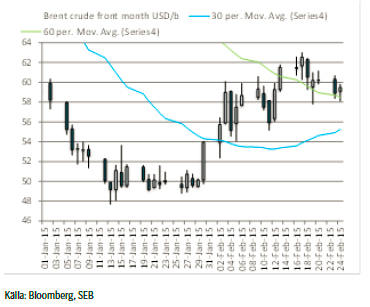Analys
SEB – Råvarukommentarer, 24 februari 2015
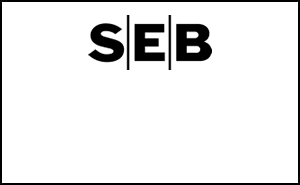
Kinesiska nyåret innebär get, resor och volatilitet
MARKNADEN I KORTHET
 Ingen kan beskylla den senaste tidens ekonomiska landskap för att vara tråkigt. Varje vecka sker nya händelser och nya akter i gamla dramer tar vid där de gamla slutar. Medan danska centralbanken med näbbar och klor ser till att upprätthålla sin valutapeg mot euron, så försöker Greklands finansminister Varoufakis och representanter från EU-kommissionen, ECB och IMF hitta en hållbar lösning som gör att landet kan vara kvar i EMU och som gör alla inblandade parter åtminstone inte alltför missnöjda. Förra veckan konstaterade vi också att guldet, trots oro relaterad till situationen med Grekland, fortsatte att sjunka och vi stänger i enlighet vad vi skrev förra veckan vår Bear-position i guld som också visade sig ha en liten uppsida under rekommendationsperioden. Samtidigt fortsätter krisen i Ukraina, varför Ryssland hotas av utökade sanktioner. Oljelagren växer globalt trots att antalet amerikanska oljeriggar i bruk blir färre; om än att de blir färre i lägre hastighet än tidigare.
Ingen kan beskylla den senaste tidens ekonomiska landskap för att vara tråkigt. Varje vecka sker nya händelser och nya akter i gamla dramer tar vid där de gamla slutar. Medan danska centralbanken med näbbar och klor ser till att upprätthålla sin valutapeg mot euron, så försöker Greklands finansminister Varoufakis och representanter från EU-kommissionen, ECB och IMF hitta en hållbar lösning som gör att landet kan vara kvar i EMU och som gör alla inblandade parter åtminstone inte alltför missnöjda. Förra veckan konstaterade vi också att guldet, trots oro relaterad till situationen med Grekland, fortsatte att sjunka och vi stänger i enlighet vad vi skrev förra veckan vår Bear-position i guld som också visade sig ha en liten uppsida under rekommendationsperioden. Samtidigt fortsätter krisen i Ukraina, varför Ryssland hotas av utökade sanktioner. Oljelagren växer globalt trots att antalet amerikanska oljeriggar i bruk blir färre; om än att de blir färre i lägre hastighet än tidigare.
När vi nu är mitt uppe i det kinesiska nyårsfirandet, där nästan två miljoner människor enligt CNN beräknas lämna bara Peking för att resa hem och fira getens år – antalet individuella resor i Kina under det 40 dagar långa nyårsfirandet beräknas totalt till 3,7 miljarder stycken – sjunker efterfrågan också på råvaror generellt, liksom att likviditeten i marknaden blir sämre. Vi skriver också en del om detta nedan.
Sammantaget bjuder råvarumarknaden fortsatt många utmaningar men lika många möjligheter och vi redogör nedan för vad vi anser vara mest intressant just. På grund av att sportlovs- och influensatider tråkigt nog har råkat sammanfalla, blir denna veckas nyhetsbrev något kortare till sitt omfång.
TRENDER I SAMMANDRAG
- Geopolitisk oro fortsatt tema
- Kinesiska nyåret bidrar till sämre likviditet och lägre efterfrågan i råvarumarknaden
- Antalet amerikanska oljeriggar fortsätter att minska, men i lägre hastighet
- Lagerbyggnaden avseende olja fortsätter och priset på brentolja kommer att pressas ned till 50 US-dollar per fat
- Fundamental balans för zink och aluminium kommer att förbättras under året
REKOMMENDATIONER
BRENTOLJA
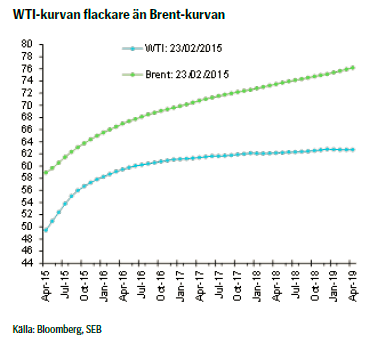 Under veckan som gick föll Brentoljan med 2,1 procent och bröt därigenom de senaste tre veckornas prisrally. I början av denna vecka har pressen på nedsidan fortsatt och Brentoljan har handlat strax under 60 US-dollar per fat och ibland nedåt 58 US-dollar per fat. Antalet oljeriggar i USA har fortsatt att falla, men under de senaste två veckorna i en lägre hastighet än tidigare. Samtidigt fortsätter amerikansk råoljeproduktion att öka, liksom att lagerbyggnaden fortsätter.
Under veckan som gick föll Brentoljan med 2,1 procent och bröt därigenom de senaste tre veckornas prisrally. I början av denna vecka har pressen på nedsidan fortsatt och Brentoljan har handlat strax under 60 US-dollar per fat och ibland nedåt 58 US-dollar per fat. Antalet oljeriggar i USA har fortsatt att falla, men under de senaste två veckorna i en lägre hastighet än tidigare. Samtidigt fortsätter amerikansk råoljeproduktion att öka, liksom att lagerbyggnaden fortsätter.
Meddelanden om att en olje-pipeline i Libyen nu har reparerats adderade till att oljepriset sjönk. Om Libyen kommer tillbaka till marknaden skulle det verkligen innebära ett tryck nedåt på priset för råolja. Vi förväntar oss dock inte att Libyen stabilt kommer att leverera olja till marknaden inom den närmaste tiden.
TREND
- Vi förväntar oss en fortsatt lagerbyggnad av olja och att detta kommer att trycka ned oljepriset mot en nivå om 50 US-dollar per fat
- Brentoljan behöver fortfarande bryta sitt 60-dagars glidande medelvärde innan det kan accelerera nedåt mot nivån om 50 US-dollar per fat
REKOMMENDATION
- Vi tror att fundamentala faktorer är bearish med en produktion högre än efterfrågan. Därför tror vi att en kort position nu kommer att ha den högsta avkastningen den närmaste veckan. Vi rekommenderar exempelvis BEAR OLJA X5 B S, eller något av certifikaten med lägre hävstång för den som vill ha lägre risk.
Brentoljan håller sig fortfarande över sitt 60-dagars glidande medelvärde
BASMETALLER
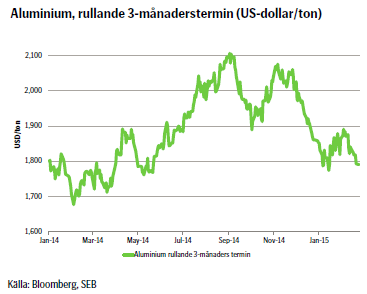 Veckan som gick karaktäriserades av både låg aktivitet och likviditet i samband med det kinesiska nyårsfirandet (18-24 februari). Också som befarat innebar det överlag fallande priser. Som vi nämnt de senaste veckorna brukar perioden före och i samband med det kinesiska nyåret innebära lägre industriell aktivitet, men erfarenhetsmässigt tar det därefter fart. Med vår underliggande positiva tro på metallerna, och i synnerhet aluminium och zink, bör den närmaste veckan innebära bra köptillfällen.
Veckan som gick karaktäriserades av både låg aktivitet och likviditet i samband med det kinesiska nyårsfirandet (18-24 februari). Också som befarat innebar det överlag fallande priser. Som vi nämnt de senaste veckorna brukar perioden före och i samband med det kinesiska nyåret innebära lägre industriell aktivitet, men erfarenhetsmässigt tar det därefter fart. Med vår underliggande positiva tro på metallerna, och i synnerhet aluminium och zink, bör den närmaste veckan innebära bra köptillfällen.
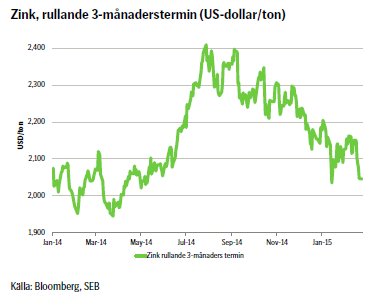 Den svagare prisutvecklingen har dämpats något av en starkare dollar. Icke desto mindre föll priserna räknat i kronor relativt kraftigt i veckan: cirka 1,8 procent för aluminium respektive cirka 4 procent för zink. Ur ett tekniskt perspektiv har zinkpriset fallit till stödnivån 2050 US-dollar per ton. Aluminium har i skrivande stund brutit genom och är under stödet vid 1800 US-dollar per ton, vilket öppnar upp för en ytterligare potentiell nedgång mot ca 1750 US-dollar per ton. Vår rekommendation på metallerna är på tre till sex månaders sikt, och vi begränsar oss till certifikat utan hävstång.
Den svagare prisutvecklingen har dämpats något av en starkare dollar. Icke desto mindre föll priserna räknat i kronor relativt kraftigt i veckan: cirka 1,8 procent för aluminium respektive cirka 4 procent för zink. Ur ett tekniskt perspektiv har zinkpriset fallit till stödnivån 2050 US-dollar per ton. Aluminium har i skrivande stund brutit genom och är under stödet vid 1800 US-dollar per ton, vilket öppnar upp för en ytterligare potentiell nedgång mot ca 1750 US-dollar per ton. Vår rekommendation på metallerna är på tre till sex månaders sikt, och vi begränsar oss till certifikat utan hävstång.
TREND
- I takt med att den fundamentala balansen förbättras bedöms priserna på aluminium och zink succesivt stärkas under året
- Flera gruvstängningar i år och nästa, kommer inte fullt ut att ersättas. Risk för brist 2016 (zink)
- Efterfrågan på aluminium har ökat 4-7 procent de senaste tre till fyra åren, vilket är en trend som förväntas fortsätta
- Terminskurvorna på båda metallerna är attraktiva. Terminspremien (contangon) är endast ca 2 procent sett tolv månader framåt.
- Bra köpläge nu efter det Kinesiska nyåret.
REKOMMENDATION
- Zink S
- Aluminium S
Notera att rekommendationerna i enlighet med vad som är beskrivet ovan är på längre sikt; tre till sex månader.
[box]SEB Veckobrev Veckans råvarukommentar är producerat av SEB:s Commodities Sales desk och publiceras i samarbete och med tillstånd på Råvarumarknaden.se[/box]
Disclaimer
Detta marknadsföringsmaterial, framtaget av SEB:s Commodities Sales desk, har upprättats enbart i informationssyfte.
Även om innehållet är baserat på källor som SEB bedömt som tillförlitliga ansvarar SEB inte för fel eller brister i informationen. Den utgör inte oberoende, objektiv investeringsanalys och skyddas därför inte av de bestämmelser som SEB har infört för att förebygga potentiella intressekonflikter. Yttranden från SEB:s Commodities Sales desk kan vara oförenliga med tidigare publicerat material från SEB, då den senare hänvisas uppmanas du att läsa den fullständiga rapporten innan någon åtgärd vidtas.
Dokumentationen utgör inte någon investeringsrådgivning och tillhandahålls till dig utan hänsyn till dina investeringsmål. Du uppmanas att självständigt bedöma och komplettera uppgifterna i denna dokumentation och att basera dina investeringsbeslut på material som bedöms erforderligt. Alla framåtblickande uttalanden, åsikter och förväntningar är föremål för risker, osäkerheter och andra faktorer och kan orsaka att det faktiska resultatet avviker väsentligt från det förväntade. Historisk avkastning är ingen garanti för framtida resultat. Detta dokument utgör inte ett erbjudande att teckna några värdepapper eller andra finansiella instrument. SEB svarar inte för förlust eller skada – direkt eller indirekt, eller av vad slag det vara må – som kan uppkomma till följd av användandet av detta material eller dess innehåll.
Observera att det kan förekomma att SEB, dess ledamöter, dess anställda eller dess moder- och/eller dotterbolag vid olika tillfällen innehar, har innehaft eller kommer att inneha aktier, positioner, rådgivningsuppdrag i samband med corporate finance-transaktioner, investment- eller merchantbanking-uppdrag och/eller lån i de bolag/finansiella instrument som nämns i materialet.
Materialet är avsett för mottagaren, all spridning, distribuering mångfaldigande eller annan användning av detta meddelande får inte ske utan SEB:s medgivande.
Oaktat detta får SEB tillåta omfördelning av materialet till utvald tredje part i enlighet med gällande avtal. Materialet får inte spridas till fysiska eller juridiska personer som är medborgare eller har hemvist i ett land där sådan spridning är otillåten enligt tillämplig lag eller annan bestämmelse.
Skandinaviska Enskilda Banken AB (publ) är ett publikt aktiebolag och står under tillsyn av Finansinspektionen samt de lokala finansiella tillsynsmyndigheter i varje jurisdiktionen där SEB har filial eller dotterbolag.
Villkor
För varje enskilt certifikat finns Slutliga Villkor som anger de fullständiga villkoren. Slutliga Villkor finns tillgängligt på kurssidan för respektive certifikat på www.seb.se, Börs & finans, fliken Strukturerade placeringar.
Risker
En sammanfattning av de risker som är förknippade med Börshandlade certifikat generellt finns i Produktbroschyren för respektive certifikat som är tillgängligt på www.seb.se/cert. För en fullständig bild av riskerna behöver du ta del av SEB:s offentliggjorda Grundprospekt för Certifikat- och Warrantprogram som är publicerat på www.seb.se/cert.
Analys
The Mid-East anchor dragging crude oil lower

When it starts to move lower it moves rather quickly. Gaza, China, IEA. Brent crude is down 2.1% today to $62/b after having traded as high as $66.58/b last Thursday and above $70/b in late September. The sell-off follows the truce/peace in Gaze, a flareup in US-China trade and yet another bearish oil outlook from the IEA.

A lasting peace in Gaze could drive crude oil at sea to onshore stocks. A lasting peace in Gaza would probably calm down the Houthis and thus allow more normal shipments of crude oil to sail through the Suez Canal, the Red Sea and out through the Bab-el-Mandeb Strait. Crude oil at sea has risen from 48 mb in April to now 91 mb versus a pre-Covid normal of about 50-60 mb. The rise to 91 mb is probably the result of crude sailing around Africa to be shot to pieces by the Houthis. If sailings were to normalize through the Suez Canal, then it could free up some 40 mb in transit at sea moving onshore into stocks.
The US-China trade conflict is of course bearish for demand if it continues.
Bearish IEA yet again. Getting closer to 2026. Credibility rises. We expect OPEC to cut end of 2025. The bearish monthly report from the IEA is what it is, but the closer we get to 2026, the more likely the IEA is of being ball-park right in its outlook. In its monthly report today the IEA estimates that the need for crude oil from OPEC in 2026 will be 25.4 mb/d versus production by the group in September of 29.1 mb/d. The group thus needs to do some serious cutting at the end of 2025 if it wants to keep the market balanced and avoid inventories from skyrocketing. Given that IEA is correct that is. We do however expect OPEC to implement cuts to avoid a large increase in inventories in Q1-26. The group will probably revert to cuts either at its early December meeting when they discuss production for January or in early January when they discuss production for February. The oil price will likely head yet lower until the group reverts to cuts.
Dubai: The Mid-East anchor dragging crude oil lower. Surplus emerging in Mid-East pricing. Crude oil prices held surprisingly strong all through the summer. A sign and a key source of that strength came from the strength in the front-end backwardation of the Dubai crude oil curve. It held out strong from mid-June and all until late September with an average 1-3mth time-spread premium of $1.8/b from mid-June to end of September. The 1-3mth time-spreads for Brent and WTI however were in steady deterioration from late June while their flat prices probably were held up by the strength coming from the Persian Gulf. Then in late September the strength in the Dubai curve suddenly collapsed. Since the start of October it has been weaker than both the Brent and the WTI curves. The Dubai 1-3mth time-spread now only stands at $0.25/b. The Middle East is now exporting more as it is producing more and also consuming less following elevated summer crude burn for power (Aircon) etc.
The only bear-element missing is a sudden and solid rise in OECD stocks. The only thing that is missing for the bear-case everyone have been waiting for is a solid, visible rise in OECD stocks in general and US oil stocks specifically. So watch out for US API indications tomorrow and official US oil inventories on Thursday.
No sign of any kind of fire-sale of oil from Saudi Arabia yet. To what we can see, Saudi Arabia is not at all struggling to sell its oil. It only lowered its Official Selling Prices (OSPs) to Asia marginally for November. A surplus market + Saudi determination to sell its oil to the market would normally lead to a sharp lowering of Saudi OSPs to Asia. Not yet at least and not for November.
The 5yr contract close to fixed at $68/b. Of importance with respect to how far down oil can/will go. When the oil market moves into a surplus then the spot price starts to trade in a large discount to the 5yr contract. Typically $10-15/b below the 5yr contract on average in bear-years (2009, 2015, 2016, 2020). But the 5yr contract is usually pulled lower as well thus making this approach a moving target. But the 5yr contract price has now been rock solidly been pegged to $68/b since 2022. And in the 2022 bull-year (Brent spot average $99/b), the 5yr contract only went to $72/b on average. If we assume that the same goes for the downside and that 2026 is a bear-year then the 5yr goes to $64/b while the spot is trading at a $10-15/b discount to that. That would imply an average spot price next year of $49-54/b. But that is if OPEC doesn’t revert to cuts and instead keeps production flowing. We think OPEC(+) will trim/cut production as needed into 2026 to prevent a huge build-up in global oil stocks and a crash in prices. But for now we are still heading lower. Into the $50ies/b.
Analys
More weakness and lower price levels ahead, but the world won’t drown in oil in 2026

Some rebound but not much. Brent crude rebounded 1.5% yesterday to $65.47/b. This morning it is inching 0.2% up to $65.6/b. The lowest close last week was on Thursday at $64.11/b.

The curve structure is almost as week as it was before the weekend. The rebound we now have gotten post the message from OPEC+ over the weekend is to a large degree a rebound along the curve rather than much strengthening at the front-end of the curve. That part of the curve structure is almost as weak as it was last Thursday.
We are still on a weakening path. The message from OPEC+ over the weekend was we are still on a weakening path with rising supply from the group. It is just not as rapidly weakening as was feared ahead of the weekend when a quota hike of 500 kb/d/mth for November was discussed.
The Brent curve is on its way to full contango with Brent dipping into the $50ies/b. Thus the ongoing weakening we have had in the crude curve since the start of the year, and especially since early June, will continue until the Brent crude oil forward curve is in full contango along with visibly rising US and OECD oil inventories. The front-month Brent contract will then flip down towards the $60/b-line and below into the $50ies/b.
At what point will OPEC+ turn to cuts? The big question then becomes: When will OPEC+ turn around to make some cuts? At what (price) point will they choose to stabilize the market? Because for sure they will. Higher oil inventories, some more shedding of drilling rigs in US shale and Brent into the 50ies somewhere is probably where the group will step in.
There is nothing we have seen from the group so far which indicates that they will close their eyes, let the world drown in oil and the oil price crash to $40/b or below.
The message from OPEC+ is also about balance and stability. The world won’t drown in oil in 2026. The message from the group as far as we manage to interpret it is twofold: 1) Taking back market share which requires a lower price for non-OPEC+ to back off a bit, and 2) Oil market stability and balance. It is not just about 1. Thus fretting about how we are all going to drown in oil in 2026 is totally off the mark by just focusing on point 1.
When to buy cal 2026? Before Christmas when Brent hits $55/b and before OPEC+ holds its last meeting of the year which is likely to be in early December.
Brent crude oil prices have rebounded a bit along the forward curve. Not much strengthening in the structure of the curve. The front-end backwardation is not much stronger today than on its weakest level so far this year which was on Thursday last week.

The front-end backwardation fell to its weakest level so far this year on Thursday last week. A slight pickup yesterday and today, but still very close to the weakest year to date. More oil from OPEC+ in the coming months and softer demand and rising inventories. We are heading for yet softer levels.

Analys
A sharp weakening at the core of the oil market: The Dubai curve

Down to the lowest since early May. Brent crude has fallen sharply the latest four days. It closed at USD 64.11/b yesterday which is the lowest since early May. It is staging a 1.3% rebound this morning along with gains in both equities and industrial metals with an added touch of support from a softer USD on top.

What stands out the most to us this week is the collapse in the Dubai one to three months time-spread.
Dubai is medium sour crude. OPEC+ is in general medium sour crude production. Asian refineries are predominantly designed to process medium sour crude. So Dubai is the real measure of the balance between OPEC+ holding back or not versus Asian oil demand for consumption and stock building.
A sharp weakening of the front-end of the Dubai curve. The front-end of the Dubai crude curve has been holding out very solidly throughout this summer while the front-end of the Brent and WTI curves have been steadily softening. But the strength in the Dubai curve in our view was carrying the crude oil market in general. A source of strength in the crude oil market. The core of the strength.
The now finally sharp decline of the front-end of the Dubai crude curve is thus a strong shift. Weakness in the Dubai crude marker is weakness in the core of the oil market. The core which has helped to hold the oil market elevated.
Facts supports the weakening. Add in facts of Iraq lifting production from Kurdistan through Turkey. Saudi Arabia lifting production to 10 mb/d in September (normal production level) and lifting exports as well as domestic demand for oil for power for air con is fading along with summer heat. Add also in counter seasonal rise in US crude and product stocks last week. US oil stocks usually decline by 1.3 mb/week this time of year. Last week they instead rose 6.4 mb/week (+7.2 mb if including SPR). Total US commercial oil stocks are now only 2.1 mb below the 2015-19 seasonal average. US oil stocks normally decline from now to Christmas. If they instead continue to rise, then it will be strongly counter seasonal rise and will create a very strong bearish pressure on oil prices.
Will OPEC+ lift its voluntary quotas by zero, 137 kb/d, 500 kb/d or 1.5 mb/d? On Sunday of course OPEC+ will decide on how much to unwind of the remaining 1.5 mb/d of voluntary quotas for November. Will it be 137 kb/d yet again as for October? Will it be 500 kb/d as was talked about earlier this week? Or will it be a full unwind in one go of 1.5 mb/d? We think most likely now it will be at least 500 kb/d and possibly a full unwind. We discussed this in a not earlier this week: ”500 kb/d of voluntary quotas in October. But a full unwind of 1.5 mb/d”
The strength in the front-end of the Dubai curve held out through summer while Brent and WTI curve structures weakened steadily. That core strength helped to keep flat crude oil prices elevated close to the 70-line. Now also the Dubai curve has given in.

Brent crude oil forward curves

Total US commercial stocks now close to normal. Counter seasonal rise last week. Rest of year?

Total US crude and product stocks on a steady trend higher.

-

 Nyheter4 veckor sedan
Nyheter4 veckor sedanTyskland har så höga elpriser att företag inte har råd att använda elektricitet
-

 Nyheter3 veckor sedan
Nyheter3 veckor sedanOPEC+ missar produktionsmål, stöder oljepriserna
-

 Nyheter3 veckor sedan
Nyheter3 veckor sedanEtt samtal om guld, olja, fjärrvärme och förnybar energi
-

 Analys4 veckor sedan
Analys4 veckor sedanBrent crude ticks higher on tension, but market structure stays soft
-

 Nyheter2 veckor sedan
Nyheter2 veckor sedanGuld nära 4000 USD och silver 50 USD, därför kan de fortsätta stiga
-

 Analys3 veckor sedan
Analys3 veckor sedanAre Ukraine’s attacks on Russian energy infrastructure working?
-

 Nyheter2 veckor sedan
Nyheter2 veckor sedanBlykalla och amerikanska Oklo inleder ett samarbete
-

 Nyheter3 veckor sedan
Nyheter3 veckor sedanGuldpriset uppe på nya höjder, nu 3750 USD



